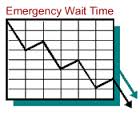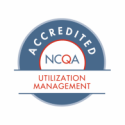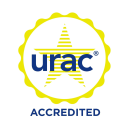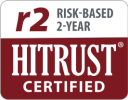 Summary: Are you managing ED throughput effectively? How do your ED wait times compare with national, regional and local averages?
Summary: Are you managing ED throughput effectively? How do your ED wait times compare with national, regional and local averages?
Overcrowding in the emergency room is a national problem. Managing the process from start to finish can increase customer satisfaction, reduce ER wait times, increase throughput, control length of stay and ultimately increase profitability. Emergency room visits are on the rise due to the aging population, technology advances, and increased access due to the Affordable Care Act. Medicaid has been expanded in many states and healthcare exchange participation is on the rise. Additionally, the individual mandate dictates penalties to be assessed to those who do not have health insurance coverage. The overcrowded ER issue will continue to exacerbate over the next year or so if efficiency measures aren’t put in place.
Managing ED Throughput – Triage Process
The triage process is critical. Greeting guests immediately is crucial. Triage allows an instant quick analysis of the level of acuity of the illness or injury and establishes a priority level for treatment. There are several different triage methods being utilized by ERs. Some ERs are creating sub wait rooms to assist with the process. This allows patients an interim place to wait based upon their initial triage determinations and separate from the main waiting room. Some ERs are triaging based upon whether the condition is medical or behavioral or both and having different wait areas determined by medical/behavioral need. Some ERs are triaging based upon likelihood of admission or discharge. Some ERs are moving patients to beds and then doing triage. The goal is to diagnose, treat, and either admit/discharge in the most efficient manner possible while making ensuring medical necessity and evidence-based criteria are adhered to.
Managing ED Throughput – Bed Assignment
One of the major issues associated with emergency rooms is wait times. Flowing patients from waiting rooms to beds should be a relatively quick process. Patients feel much better not having to wait with all of the other patients in the main waiting room for hours. Longer wait times add to the anxiety of those waiting as well as increase the likelihood the patient will walk out prior to treatment, reducing revenue. Additionally, in the future, customers who experienced long wait times and/or had customer service issues will opt for other emergency rooms if given a choice and not recommend the specific ER to their friends and family. The overall effect can be detrimental. Quicker bed assignment leads to higher customer satisfaction and lower anxiety levels.
Managing ED Throughput – Staffing and productivity
Staffing the ER can be a frustrating process. Do you flex with census? Do you staff according to admission/ER visit patterns? Do you staff with midlevels such as nurse practitioners? Are your staff available for admission/discharge 24/7, 7 days a week? Are your providers controlling length of stay appropriately?
Managing ED Throughput – Metrics are key
How does an ER know how they are doing? Key metrics should be established, monitored, tracked, trended, and acted upon. Some of the key metrics to measure the ER flow are:
- Time from entering the ER, to greeting patient to initial triage – How long does it take a patient who walks through into the ER to be greeted? Is there a line? Is it standing room only? What is the triage process? Is triage done in the main meeting room? Is triage done bedside? Are these metrics available by diagnosis and/or payer?
- Triage to bed – how long does it take once greeted and triaged to be assigned to an ER bed? How long are patients on average spending in the ER waiting room?
- Bed to disposition – how long did the patient spend in the ER bed before being greeted, treated, and released?
- Bed to admission – how long did the patient spend in the ER before being admitted to an inpatient floor? How long did it take to be evaluated based on medical necessity criteria? Once evaluated, how long did it take to physically be admitted to the inpatient unit? Does this vary based upon diagnosis/unit/payer? How often do providers do consultation in the ER – hourly, twice a shift?
- Matching nurse staffing in triage to highest arrival rates – how is the ER staffed? Is it staffed based upon census and flexed accordingly? Is it staffed based upon most prevalent arrival times? Are consults/evaluations done 24/7 and 7 days a week?
- ER Length of stay – what is the length of stay in the ED? Does it vary based upon provider? Do certain providers have erratic patterns of admission and discharge? Is the admission/discharge process being managed? Does one provider discharge their patients during a narrow window of time i.e. 8-10am? Does LOS vary based upon payer i.e. Medicaid, Medicare? What is your LOS in terms of national/regional/local averages?
- ER productivity – are your providers spending enough time in the ER? Do they make frequent enough rounds? Are they spending time appropriately and maximizing billing which is substantiated through appropriate documentation? Are they performing enough consults to be profitable? Is 24/7 coverage available? Are you using telemedicine opportunities when census is particularly high? Are you staffed on the weekends or do you have providers on call? How are you using locums? Are they effective? Are you paying them overtime for weekend coverage? This can be very costly.
- Readmissions – what is your readmission rate? Do you have “frequent flyers”? Are you releasing patients before they are medically ready for discharge? Are you following up with discharged patients to ensure follow up has occurred with primary physicians and other treating physicians? Do you notify the primary physician that their patient was in the emergency room and provide the specifics of diagnosis/treatment/follow up? Readmissions are very costly to the healthcare system. Efforts to reduce readmissions should be in place, monitored and tracked to make sure every effort is given to appropriate treatment, admission and discharge protocols are followed. Are you currently paying penalties because your readmissions rates are too high? Are you prepared for steeper penalties in the upcoming years?
What are you doing to manage your ER patient flow? How do you compare to national, regional, and local statistics? Have you reviewed your ER process every step of the way to ensure maximum efficiency, profitability, and patient satisfaction?
Managing ER Throughput – Assistance
Analyzing ER throughput can be a daunting process. Where do you begin? How in-depth of an analysis should be performed? What are the pain points? What tweaks to the process will provide the most bang for the buck? If you are asking these types of questions and need assistance with ER throughput, reducing readmissions or maximizing provider productivity, please contact us:
BHM Healthcare Solutions www.dev.dev.bhmpc.com
1-888-831-1171
click below:






